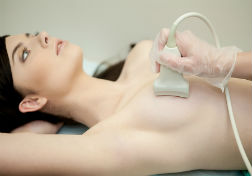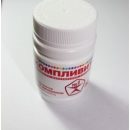From the very birth, the child regularly faces the need for blood test: planned dispensarization, examination before vaccinations, receiving certificates for admission to kindergarten or school.
Content
Often, this simple analysis becomes a real test for both the smallest patient and for parents, medical personnel. At the same time, correctly prepared for analysis, you can significantly reduce the number of children's fears and tears, and most importantly — Get reliable data about child health.
Blood test is an important diagnostic test that allows you to objectively assess many processes occurring in the body of the child. So, elevated leukocyte levels or the erythrocyte sedimentation rate (ESO) may indicate the presence of an inflammatory process. If the child is still quite small and can not tell that he has a hurt, blood test becomes an indispensable assistant to the doctor in the formulation of the diagnosis and appointment of the necessary treatment.
Preparation for analysis
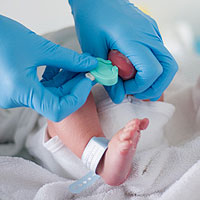
Hike to the clinic scares almost every child, so you need to prepare for the surrender of the analysis in advance. In addition, non-compliance with some recommendations may affect the accuracy of the study.
During the day before taking the baby's blood, you need to limit in exercise, sports. 12 hours before the surcharge cannot be eaten.
On the day of analysis in the clinic you need to come early in the morning: it is recommended to donate blood from 7 to 10 am. Immediately before analysis, for 10-15 minutes, the child must be alone and warm.
Before the procedure you need to tell a doctor or nurse, what medications take a child. At the time of taking the blood to parents better stay next to the child. The maximum amount of blood, which can be taken at the same time for laboratory studies, must be calculated based on the age and weight of the child, its anatomical features one.
Capillary blood: for and against
If it is necessary to study a small (up to 0.5 ml) blood volume is traditionally used capillary blood coming from a small puncture on the finger or on the heel. The last option will suit the smallest patients under the age of 1 and weighing less than 9 kg 2. In the heel a lot of vessels and little nerve endings, which makes it possible to quickly and painlessly take the material for research. For these purposes, it is recommended to use the side surfaces of the child's heel, and it is better to heat the heel better to improve blood flow to 34°WITH. To do this, you can use a warm towel or a rubber glove filled with warm water. But if a child has a bad blood supply, poor blood clotting, swelling or damaged skin on the heel, then it is not recommended to take blood from the heel 3.
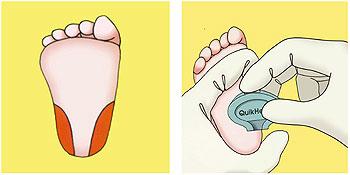 In the capillary blood takes there are a number of flaws. This is due, first of all, with the composition of blood itself: capillary blood has a smaller concentration of calcium, potassium and general protein, but a higher glucose and hemoglobin concentration
In the capillary blood takes there are a number of flaws. This is due, first of all, with the composition of blood itself: capillary blood has a smaller concentration of calcium, potassium and general protein, but a higher glucose and hemoglobin concentration
Differences for the analysis of capillary blood are caused by the fact that the probability of errors in this case is three times higher than when taking venous blood five.. In the process of taking capillary blood in a child, there may be painful sensations when performing puncture due to the injection of needles, pressing on finger, repeated punctures or the use of large lanceters, especially in the case of weak blood flow.
Capillary blood in patients older than 1 year is recommended to take from the side surfaces of medium or nameless fingers. As when taking blood from the heel, the surface of the finger before making puncture, it is necessary to heat a bit. This will increase the speed of blood flow and avoid excessive pressure on the finger when taking blood from the finger 6.
Given these circumstances, physicians of the West countries today practically refused to take capillary blood. However, if the doctor considers the analysis of capillary blood necessary, it is possible to increase its accuracy and reduce pain. So, with the help of scarifiers, automatic lanceters can be made puncture on a fixed depth (from 0, 85 mm to 1 mm) 7. For these analyzes, special microbiros are used with reagents and collectors for blood collection eight.
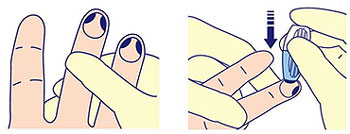
What is an analysis of venous blood?
Blood from Vienna allows you to get more objective data on patient health. Venous blood in children take from the median elbow vein, the lateral subcutaneous veins of hands, the veins of the hands and legs, the large subcutaneous veins of the legs, as well as the cranial veins (at the smallest). You can do this in two ways: open and closed.
Today, in most cases, nurses take blood from Vienna with a syringe, a hollow needle or gravity in a test tube. At the same time, numerous cases of reuse of needles and infection of patients and personnel were noted. Open taking technology itself is also far from perfection — In this case, there is an increase in the risk of destruction of blood cells when it is transferred to the test tube. In addition, glass tubes can break, and blood — absorb tampon, which is closed by a test tube. This is an unsafe practice that is fraught with a high risk of infection of the medical sister and a laboratory officer, as well as the spread of hemocontact infections.
The optimal option for obtaining blood for the study today is the so-called closed method using vacuum systems. This is a modern medical device that allows you to avoid errors that often occur when using open-type systems. The closed system consists of a vacuum test tube, holder and needles. The test tube allows you to dial the required blood volume, and a specially sharpened needle with a special silicone coating easily penetrates the skin without causing pain.
After admission to the test tube, blood will be securely stored in such a test tube, which eliminates the possibility of loss of material and the need to go with the child for repeated analysis.
In order to avoid taking excessive blood volumes and make the blood takes the most painless, experts recommend using pediatric vacuum tubes, as well as butterfly needles with a small-length catheter and a small needle diameter and with a transparent camera that allows you to visualize the moment of the needle in Vienna.
The procedure for taking blood in a closed way is simple and does not cause pain. Analysis of this type of nurse will need about 30 seconds — During this time, the child will not even have time to be frightened, and hence parents and medical personnel in the future do not have to spend time on clarification and persons: «It doesn't hurt». Thus, the diagnosis will be carried out quickly and accurately, and a small patient — Relinated from fear, which sometimes accompanies man throughout his life.
one Recommendations for the collection of venous and capillary blood in children and newborns // Bulletin of the Association of Medical Sisters of Russia. 2014. WITH. 20-22.
2 Noskina N.BUT. Recommendations for blood take in newborns // Bulletin of the Association of Medical Sisters of Russia. 2013. WITH. 36.
3 Collection of materials for organizing the work of the medical sister of the department of newborns // Saint Petersburg: Rams, 2013. WITH. 4.
4 Noskina N.BUT. Recommendations for blood take in newborns // Bulletin of the Association of Medical Sisters of Russia. 2013. WITH. 36.
five Skorohodova T. G., Matushkin S. IN., Grishchenko D. BUT. Modern technologies for high-quality analysis of capillary blood // Clinical Laboratory Consilium. № 1 (45). February 2013. WITH. 34.
6 Recommendations for the collection of venous and capillary blood in children and newborns // Bulletin of the Association of Medical Sisters of Russia. 2014. WITH. 20-22.
7 Recommendations for the collection of venous and capillary blood in children and newborns // Bulletin of the Association of Medical Sisters of Russia. 2014. WITH. 20-22.
eight Recommendations for the collection of venous and capillary blood in children and newborns // Bulletin of the Association of Medical Sisters of Russia. 2014. WITH. 20-22.





